Comet Venus
Velikovsky’s Comet Venus?

Immanuel Velikovsky concluded from his extensive interdisciplinary research that the planet Venus was remembered from the time of the dawn of civilization as a brilliant cometary body. While there is a wealth of literal sources to draw upon, when it comes to the pictorial evidence it isn’t as forthcoming. No images can be conclusively identified as actually representing Venus in cometary form, a situation that essentially shouldn’t exist. After all, it stands to reason that it was naked eye observations that inspired the myths. So, at the very least the imagery should be equal to or analogous to the literal sources – but this clearly isn’t the case.

Have we overlooked something? Is it possible images of Comet Venus have been staring us in the face for decades?
The image (above right) has been taken from the back of Tutankhamen’s throne. It depicts the wife of king Tut, Ankhsunamun. The queen is shown wearing a very distinctive crown consisting of a disk surmounted by cow horns and two tall plumes. The cow horns are to be associated with the goddesses Hathor (Earths ring) and Isis (forefront of the ecliptic haze). The plumes, the god Amun (Amun was the Aurora).
This unusual headdress made its appearance in the New Kingdom and features prominently in Egyptian art – numerous queens can be seen sporting this particular crown as demonstrated throughout this page. Although the actual shape or outline remained constant (for approximately 900 years) there exist a few variants to the colours shown. For example, the disk was predominantly painted the traditional Egyptian deep red, the ‘horns’ normally black, while the plumes can be gold, a plain yellow or blue and without the ‘filaments.’
Like most Egyptian crowns encompassing a sphere, it somehow represents an aspect of the sun, or so the conventional way of thinking goes. A perplexing line of thought since apart from the disk the Sun looks nothing like this – our Sun is a golden glaring ball – it doesn’t have cow horns wrapped around it and most certainly exhibits no signs of enormous cometary tails.
It is apparent even to the uninitiated that what we are looking at here is a comet – a large comet with a plumed tail. Furthermore, if Egyptian art is used as a measure of time, this comet graced our skies for nearly a thousand years. It is carved, painted and represented in statues the length and breadth the of Nile valley. Even the legendary Cleopatra wore this particular headdress (photo below).
Could this crown be a true-life physical representation of proto-Venus as it appeared in ancient times? To quote Wal Thornhill (The Electric Universe).
“In the electrical model of the solar system, any body on a sufficiently eccentric orbit about the Sun will exhibit cometary features. For ancient people to have seen Venus as an Earth-threatening comet, Venus must have had an eccentric orbit that brought the planet near to Earth” (link).
Are we looking at Velikovsky’s Comet Venus?

Comparing the comet crowns on this page with the Venus diagram (above left) and the YouTube clip above reveals some fundamental similarities, far too close to be deemed coincidental. In fact, for all intents and purposes they are virtually identical !

The orb represents the body of Venus; the horns signify the bow shock as the solar wind slams into Venusian surface, enveloping its body due to a lack of an intrinsic magnetic field. The two large plumes represent Venus’ magnetotail – split in two and flowing downstream at least three times its diameter.
The above image on the left is just a diagram, and today Venus’ comet tail can only be detected by magnetometers and charged particle detectors. However, place Venus on an eccentric orbit in a highly charged ‘dusty’ environment and the normally invisible magnetotail (and bow shock) would become highly visible.
Wal Thornhill commenting on Venus’ cometary magnetotail:
“A power surge in those filaments today would cause them to glow, and Venus would form a ‘stupendous’ cometary apparition in the sky. The forensic evidence would stand up in court, showing that Venus was a comet within human memory.”
In addition to this we have to take into account Venus was far more active 3,000 years ago – outgassing incalculable quantities of yellow sulfur gasses from its many thousands of volcanic vents (something it is probably still doing). This would also play an important part in granting luminosity to Venus’ plumed magnetotail.
Science is slowly proving Velikovsky to be correct in a number of areas. Perhaps with the comet crown of ancient Egypt we now have the pictorial evidence to match.
To my knowledge the first queen to wear the ‘Comet Venus’ crown was queen Tiye (image), great royal wife to Amenhotep III circa 1355 B.C. (conventional dating) One of the last was Cleopatra VII circa 40 B.C. (image below or here).
As we can see this gives us a period of over thirteen hundred years. I have given the conservative figure of 900 years because ancient chronology is out… well out! The emergence of the New Kingdom should be dated to around 1000 B.C. This following the Dark Age of approximately 1200 B.C. This in turn should be should synchronized with what Egyptologists have dubbed the Second Intermediate Period. A misleading term which really should be changed to something like ‘the 2nd major Dark Age.’ A time when foreign bodies ruled the heavens in the guise of the Hyksos (rouge shepherd moons). The cause of this DA was Comet Venus crossing the obit of earth to appear sunside (daytime – adorning highly luminous cometary plumes) and the warrior god king Mars beginning to lock into a geosynchronous orbit above the Trans Himalayas (thus artificially and catastrophically raising them). Subsequent to this we have the Amarna Period around the 7-8th century BC. This being a time honoured recording of the electromagnetic extraction of Mars’ core (forming the Valles Marineris) to become the planet Mercury (as per Ackerman). Initially worshiped as the Aten only (upon cooling) to eventually join the royal bloodline of celestial god kings (GKS).
Whether or not the figure is 900 or 1300 years, it is logical for to assume that Comet Venus must have been seen for many hundreds of years as it slowly migrated towards the Sun and its current orbit. Highly visible during the day (as a comet!) due to our Sun being hazed red behind 93 million miles of dust and debris i.e. no glare! The Red Sun I might add, exactly as represented in Egyptian art. Please take note, while I’m comfortable giving relative dates, given the basic premise of the God King Scenario that ancient history is ‘upside down’ I’m understandably reluctant to give exact dates.
God King Scenario (GKS)
Taking the Venus diagram above, it takes no imagination whatsoever to see that Venus even today looks exactly like the plumed images created by the ancient Egyptians only a few millennia ago. They drew, painted, carved exactly what that saw in the skies above earth – THE PLANET VENUS IN COMET FORM!
Fact: Only Egypt’s divine queens are depicted wearing this particular crown, why was this? Why wasn’t Egypt’s warrior god kings depicted wearing this distinctive ‘comet crown?’ Why the exclusivity in favour of the queens?
As per the GKS, the queens wore this particular crown because they were first and foremost guises of the divine planet Venus. They were in the second instance represented here on earth via human ‘doubles’ – humans believed to be ‘at one’ or the human incarnation of celestial bodies (see Egyptian Dualism and the Crux of the GKS).
With this in mind, we take a look at the following to show how this makes perfect sense. I would even argue, it is the only way to read the iconography of the ancients

The fearless warrior Mars and the ever passive and beautiful queen Venus – a marriage made in heaven!
Here we have accurate images of Venus and Mars as they danced with earth only 4,000 years ago as Egypt’s true divine monarchy. The only thing these orbs have in common with the sun is they both inhabited the same celestial sphere.
They appear in cometary form because at this particular time (New Kingdom) both Mars and Venus adorned cometary tails. Venus, devoid of a magnetic field has the solar wind slamming into its surface enveloping its disk thus forming two gigantic tails and a distinctive ‘cow horn’ bow shock. Mars on the other hand having just given birth (7th century BC) birth to its solid iron core (the Aten/Mercury) still maintained remnant magnetism and a partial atmosphere, this buffered the solar wind somewhat – this was duly represented in the buffering ‘rams horns.’
Size very important as the above images could literally be painted on the roof of the sky to get a rough idea of exactly what was observed.
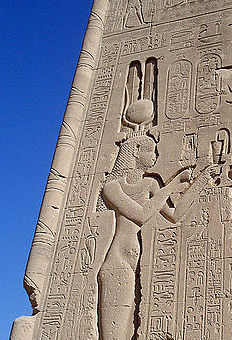
Left: The personified goddess Cleopatra/Venus in comet form offering ‘volatiles’ to Egypt’s numerous sky gods. The cosmogonical gods attributed to such phenomena as earths rings (Hathor) and the ecliptic haze (Isis) now no longer visible as cosmic chaos has all but subsided.
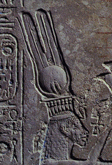
Right: Nefertiti/Venus (‘the beautiful one has arrived’) Only the queens of the New Kingdom are shown wearing this very distinctive comet crown, never the god king pharaohs. This speaks volumes, for as proposed Comet Venus was named and renamed numerous times over as Egypt’s divine queens. Where possible, represented on earth via human doubles. A belief whereby humans considered themselves as the incarnation of astral bodies (See The Egyptian Dualism). A very natural belief given a cosmos littered with countless bodies appearing to move back and forth between the firmament of heaven and earth – two very real vibrant worlds, the Egyptians called them Upper and Lower Egypt.

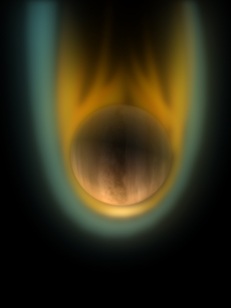
Nefertiti’s comet Venus crown is very interesting in that, take a close look at the disk. It has two cobras at the point where the solar wind would slam into the Venusian surface. Again, compare this to the same point in the Venus diagram to the right (the very luminous bit). The two cobras doubtless represent the shimmering point of impact – electrical manifestations glowing and shimmering and taking on the attributes of snake-like apparitions, hence the two cobras.
The same scenario applies to the image above left. Compare to the Venus diagram on the right.
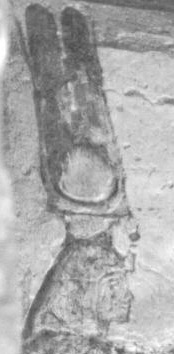

On the left; a personified queen adorning the Comet Venus headdress. Right: One of the many guises of Comet Venus – Nefertiti “The Beautiful One Has Come” – wife of Akhenaten/Mars. Scholars are baffled as to how Nefertiti seemingly appeared from nowhere and then magically disappeared. This is self explanatory, if we simply allow for the many names changes attributed to Comet Venus.
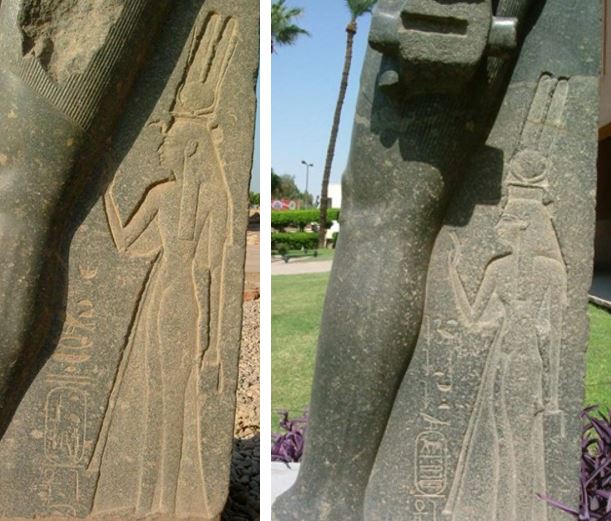
Left: Queen Isetnofret/Venus is shown subservient to king Merenptah/Mars. Size matters and this image reveals that king Mars was dominate in the foreground while queen Venus, as recorded remained in the background – a beautiful passive wife to the warring Mars. The transparent clothing is symbolic of the then see through wispy atmosphere of Venus. Right: Queen Bint-Anath, another wife of Merenptah. Another aspect of Venus.
More Comet Venus images below.
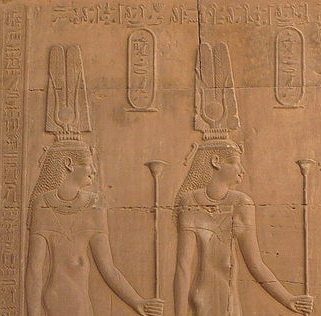
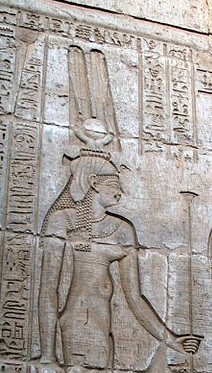
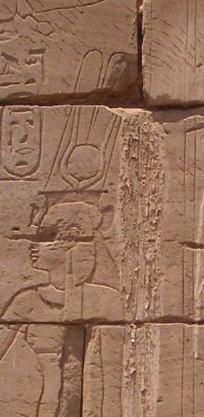



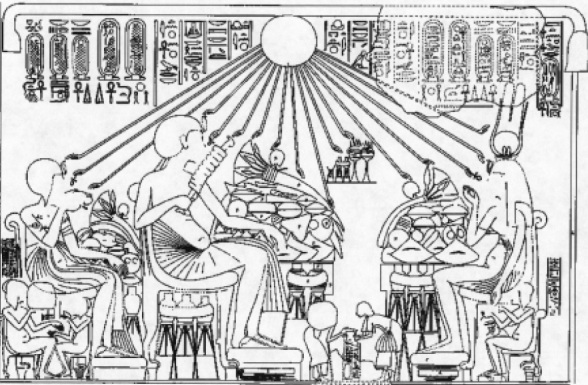
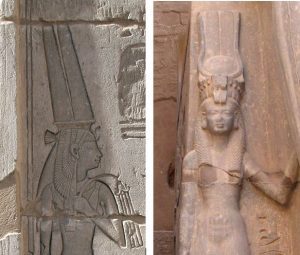
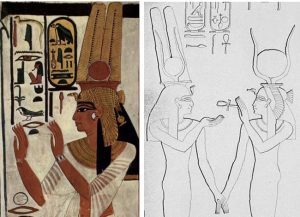
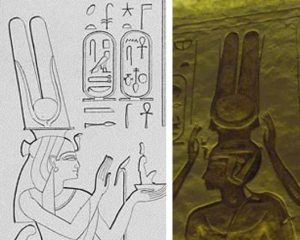
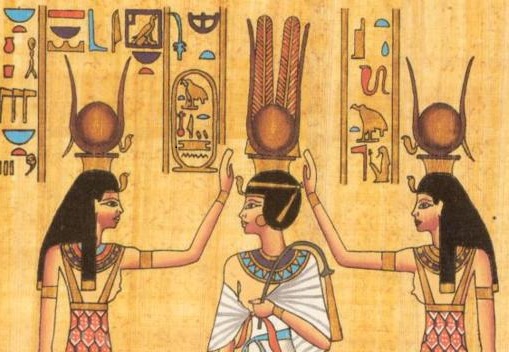
Comet Mars Headdress
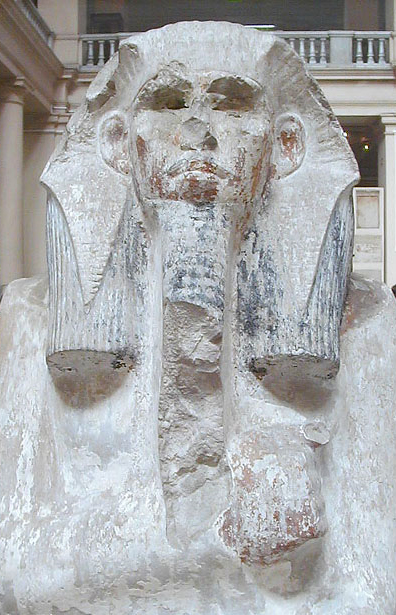
King Djoser (‘Divine of the body’) This god king’s headdress isn’t a fashion statement! King Djoser was a guise of Mars who, at this particular time, also exhibited cometary traits. Also note, the traditional rich red flesh, this doubtless indicative of Mars, the Red god of war.
All the above and more are further explained in my latest book ‘Comet Venus’ which is now available for purchase here.
Comet Venus on Thunderbolts
https://www.thunderbolts.info/tpod/2010/arch10/100312cometvenus.htm
Velikovsky’s Venus on Sky & Telescope
https://skyandtelescope.org/sky-and-telescope-magazine/velikovskys-venus/A polite request:
There exists hundreds of Comet Venus images however, due to copyright infringements I cannot display as many as I would like. If you are aware of any other comet crowns that are copyright free, please forward them to me via email, thank you.


